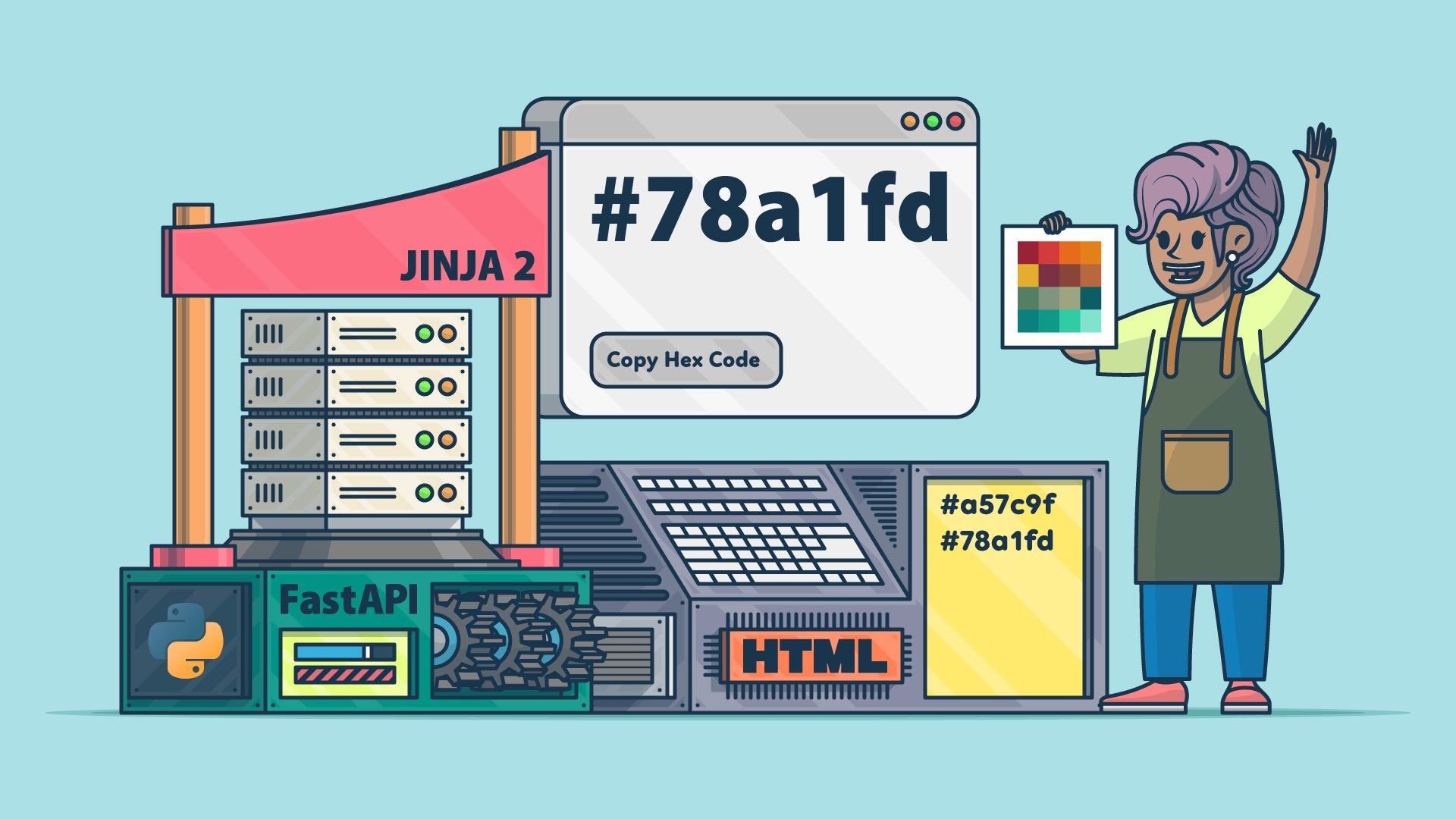
"By the end of this guide, you'll be able to serve dynamic websites from FastAPI endpoints using Jinja2 templates powered by CSS and JavaScript. By leveraging FastAPI's HTMLResponse, StaticFiles, and Jinja2Templates classes, you'll use FastAPI like a traditional Python web framework. You'll start by returning basic HTML from your endpoints, then add Jinja2 templating for dynamic content, and finally create a complete website with external CSS and JavaScript files to copy hex color codes:"
"Before you start building your HTML-serving FastAPI application, you'll need to set up your development environment with the required packages. You'll install FastAPI along with its standard dependencies, including the ASGI server you need to run your application. Select your operating system below and install FastAPI with all the standard dependencies inside a virtual environment: These commands create and activate a virtual environment, then install FastAPI along with Uvicorn as the ASGI server, and additional dependencies that enhance FastAPI's functionality."
FastAPI can serve dynamic websites using Jinja2 templates together with CSS and JavaScript. HTMLResponse, StaticFiles, and Jinja2Templates enable serving HTML pages, static assets, and template rendering. Endpoints can return basic HTML, then incorporate Jinja2 templating for dynamic content, and include external CSS and JavaScript to add interactivity such as copying hex color codes. A development environment requires installing FastAPI, Uvicorn, and standard dependencies inside a virtual environment. Installation commands create and activate a virtual environment and install Uvicorn plus additional dependencies. The standard dependency option includes Jinja2 for templating. An interactive quiz can test learning progress.
Read at Realpython
Unable to calculate read time
Collection
[
|
...
]